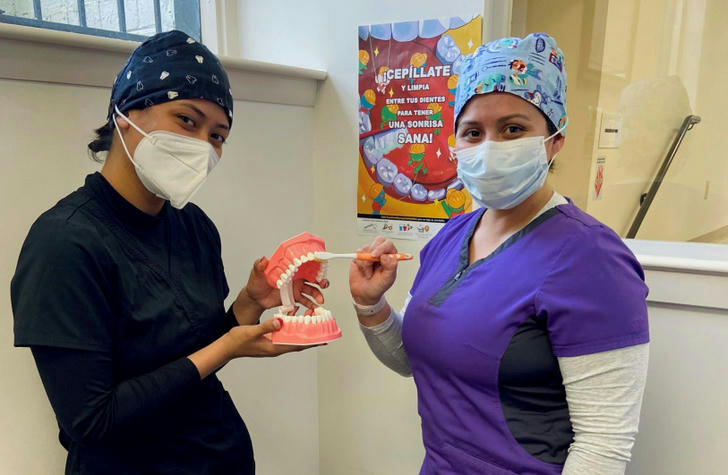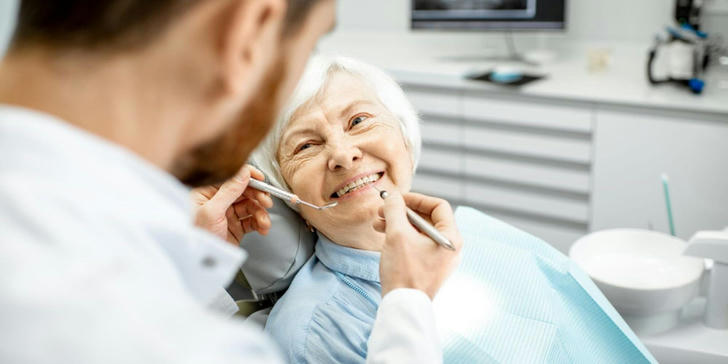No Insurance? Budget-Friendly Dental Care for You!
Dental care can be expensive, especially without insurance. Costs for cleanings, fillings, or more complex procedures can feel overwhelming. But don’t worry—affordable options exist. From community clinics to dental schools, there are ways to care for your teeth without breaking the bank. This guide will show you how.

Ⅰ. Understanding Dental Costs
Dental care is costly due to equipment, materials, and skilled labor. A cleaning can cost $75-$200, while a filling might be $100-$300. More complex treatments, like root canals or crowns, can cost thousands. Without insurance, these expenses can add up quickly. Knowing where costs come from can help you find ways to save.
Ⅱ. Budget-Friendly Dental Care Options
If you’re uninsured, affordable dental care is still within reach. Below are some of the best options, organized by cost and accessibility, to help you find the right solution for your needs:
1. Mission of Mercy (MOM) Events
- Cost: Minimal out-of-pocket expenses for services.
- Services: Cleanings, fillings, extractions, and basic care.
- Best For: Those in immediate need of essential dental care.
- How to Apply: Check the Michigan Dental Association Foundation’s website or local event listings for upcoming MOM clinics. Arrive early, as services are provided on a first-come, first-served basis.
2. Dental Schools
- Cost: $20-$50 for cleanings; other services at significantly reduced rates.
- Services: Routine cleanings, fillings, extractions, and more.
- Best For: Patients willing to receive care from supervised dental students.
- How to Apply: Visit the American Dental Association’s website to find a dental school clinic near you. Contact the clinic directly to schedule an appointment.
3. Community Health Centers
- Cost: Sliding scale fees based on income.
- Services: Cleanings, fillings, extractions, and preventive care.
- Best For: Low-income individuals seeking comprehensive, affordable care.
- How to Apply: Use the Health Resources and Services Administration (HRSA) tool to locate a federally funded health center. Call the center to inquire about dental services and eligibility requirements.
4. Nonprofit and Charitable Clinics
- Cost: Low-cost or income-based fees.
- Services: Basic dental care, preventive treatments, and financial assistance for major procedures.
- Best For: Underserved populations, including seniors and children.
- How to Apply: Search for local nonprofit dental clinics online or through community organizations. Contact them directly to learn about their application process and required documentation.
5. Dental Lifeline Network
- Cost: Reduced fees, with additional financial assistance available for qualifying individuals.
- Services: Comprehensive treatments like crowns, bridges, and dentures.
- Best For: Seniors, people with disabilities, and those with chronic health conditions.
- How to Apply: Visit Dental Lifeline Network’s official website to complete an online application. Provide proof of income, disability, or medical condition to determine eligibility.
6. Dental Discount Plans
- Cost: Small annual fee for 10%-60% discounts on services.
- Services: Cleanings, fillings, root canals, crowns, and more.
- Best For: Individuals seeking flexible, affordable access to routine and major dental care.
- How to Apply: Research discount plans online, compare benefits, and sign up directly through the provider’s website. Once enrolled, present your membership card at participating dental offices.

Ⅲ. Tips to Save on Dental Costs
Preventive care is key to avoiding expensive treatments. Brush, floss, and get regular check-ups to catch problems early. Many clinics also offer payment plans to spread out costs. Don’t hesitate to ask about discounts—some dentists may lower fees based on your financial situation.
Ⅳ. Alternative Treatments
For minor issues, at-home care kits and over-the-counter products can help. Teeth whitening kits, for example, are cheaper than professional treatments. Use these products carefully, and consult a dentist if problems arise. While not a replacement for professional care, they can help maintain oral health between visits.
Ⅴ. Real-Life Success Stories
Case 1: Sarah, a 28-Year-Old Single Mom
“As a single mom, I always put my kids first, and my own health took a backseat. I hadn’t been to the dentist in years because I couldn’t afford it without insurance. Even a simple cleaning felt like a luxury. Then, a friend told me about a community health center nearby that offered sliding scale fees based on income. I decided to check it out.
The application process was straightforward, and the staff was so understanding. I was able to get cleanings for myself and my kids at a price that fit my budget. They even gave my kids fluoride treatments and taught me how to take better care of their teeth at home. I left feeling so relieved—like a huge weight had been lifted off my shoulders. Now, my kids have healthy smiles, and I don’t have to stress about the cost. It’s been a game-changer for our family.”
Case 2: John, a 67-Year-Old Retiree
“I’ve been retired for a few years now, and living on a fixed income has been tough. I’d been missing several teeth for a long time, and it made eating and smiling really difficult. I wanted dentures, but the cost was just too high. Then, I heard about the Dental Lifeline Network from a friend.
I applied online, and the process was simple. They matched me with a local dentist who volunteered his time to help people like me. I got a full set of dentures at a price I could actually afford. The dentist and his team were so kind and professional—it felt like they truly cared about helping me. For the first time in years, I can eat comfortably and smile without feeling embarrassed. This program gave me my confidence back, and I’m so grateful.”
Conclusion
Affordable dental care is within reach, even without insurance. Explore options like community clinics, dental schools, and discount plans to keep your smile healthy without breaking the bank. Start today!
